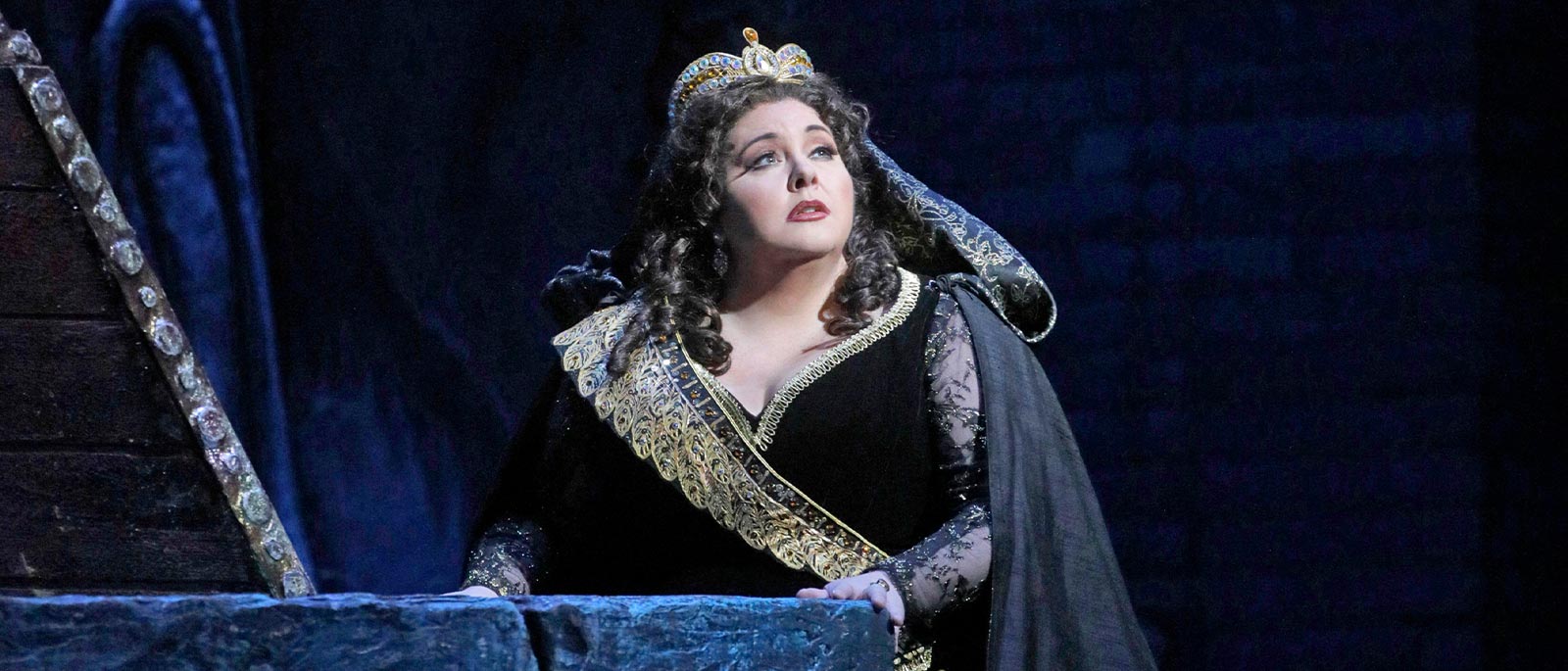
Queen Angela
When she appeared as Semiramide, the title monarch of Rossini’s grand Babylonian epic, Angela Meade was the first artist to tackle the role at the Met in more than a quarter century. In 2018 the soprano spoke with the Met’s Christopher Browner about returning this under-performed masterpiece to the Met stage.
What excites you about bringing Semiramide back to the Met?
I’ve always been a person who enjoys a challenge. Most of what we know of Rossini’s operas are the comedies, but I really find a lot of joy and excitement in singing his serious operas. These pieces have fallen into obscurity, but Semiramide has so much beautiful music—with a lot of flashy coloratura—and also a compelling story. There’s love, intrigue, murder—all of the things that thrill us in opera.
You first sang this role in concert in 2009. Has your interpretation changed since then?
That was the first and only time I’ve ever sung it. Since then, it has definitely solidified. It doesn’t seem as mammoth to me as it did then. Many of the passages that probably posed challenges at the time have worked themselves out with the addition of all the other bel canto roles I’ve sung since.
Earlier this season, you wowed audiences as Norma. Do the two characters share anything in common?
There are a lot of similarities. Both characters have very noble music. They’re powerful women who are put in unbearable situations, and this causes them to lash out. They’re both experiencing unrequited love, and they’re both mothers. Though Semiramide doesn’t realize she’s Arsace’s mother—awkward!
You get to sing some ravishing duets.
The duets are a real treat. There’s such an excitement when you get to sing with somebody in close harmony. It’s like being inside of each other’s sound. And I love Elizabeth DeShong, who’ll be signing Arsace. She’s so incredibly talented, and it’s going to be a lot of fun to work with her on this. In most of the bel canto repertoire, there are great duets between mezzo and soprano, and they’re usually my favorite parts of the score. But I can’t forget Semiramide’s big aria in Act I—it’s one of my favorite arias to sing.
That aria allows the soprano to embellish the vocal line. How do you decide which ornaments you’ll feature in your interpretation?
Rossini really gives singers the space to ornament a line in a way that fits their individual voices. If you’re really great at trills or high notes, those are things you can add. I ornament up more often than not because my voice likes to lie up there. But as I prepare a role, I am looking to figure out what really fits me. I do a lot of listening to what others have done, and I go to the piano and think, “Does this work for me? How could I change this so it could be good for me?” Then I go to a coach, and we work to piece it all together.
You make this complex music sound effortless, but it must be very challenging.
It is a lot of work—both in terms of vocal technique and to memorize—but really, it feels like a natural fit for me. My voice lends itself well to singing these long, legato lines, and I’ve always liked to sing in my upper register. When I first approached this repertoire, it felt like, “Oh, this is what I’m supposed to be doing. This is what I’m supposed to be singing.”
Christopher Browner is the Met’s Associate Editor.